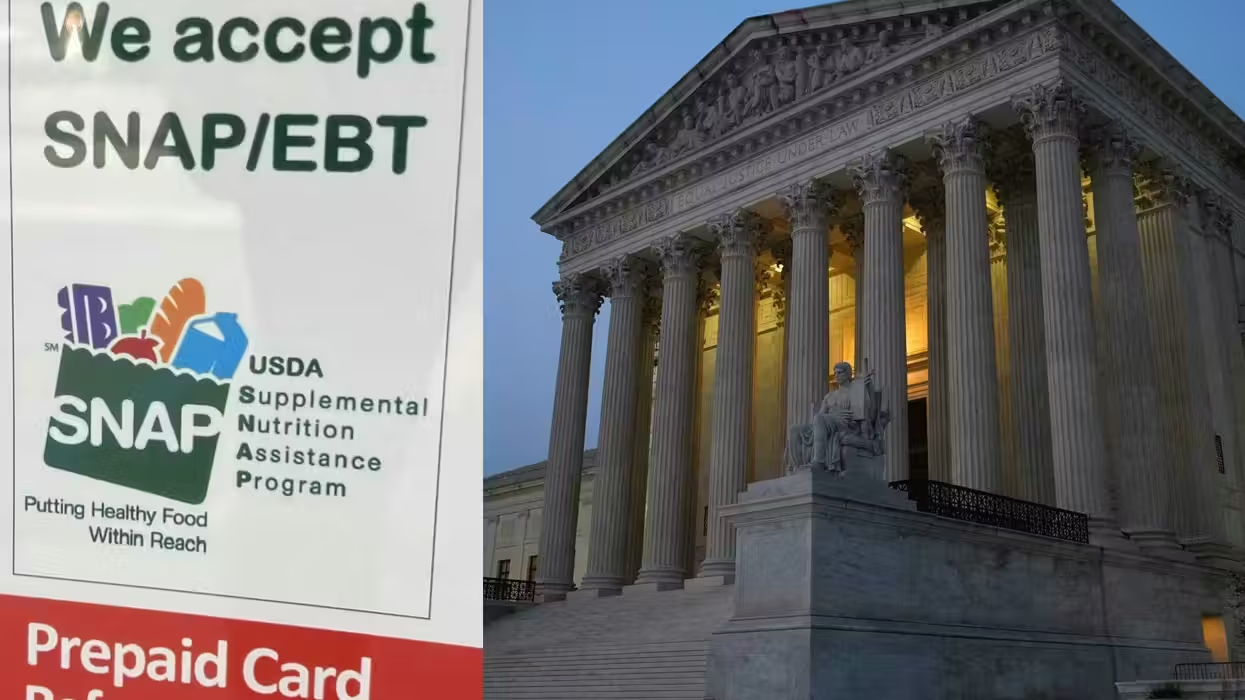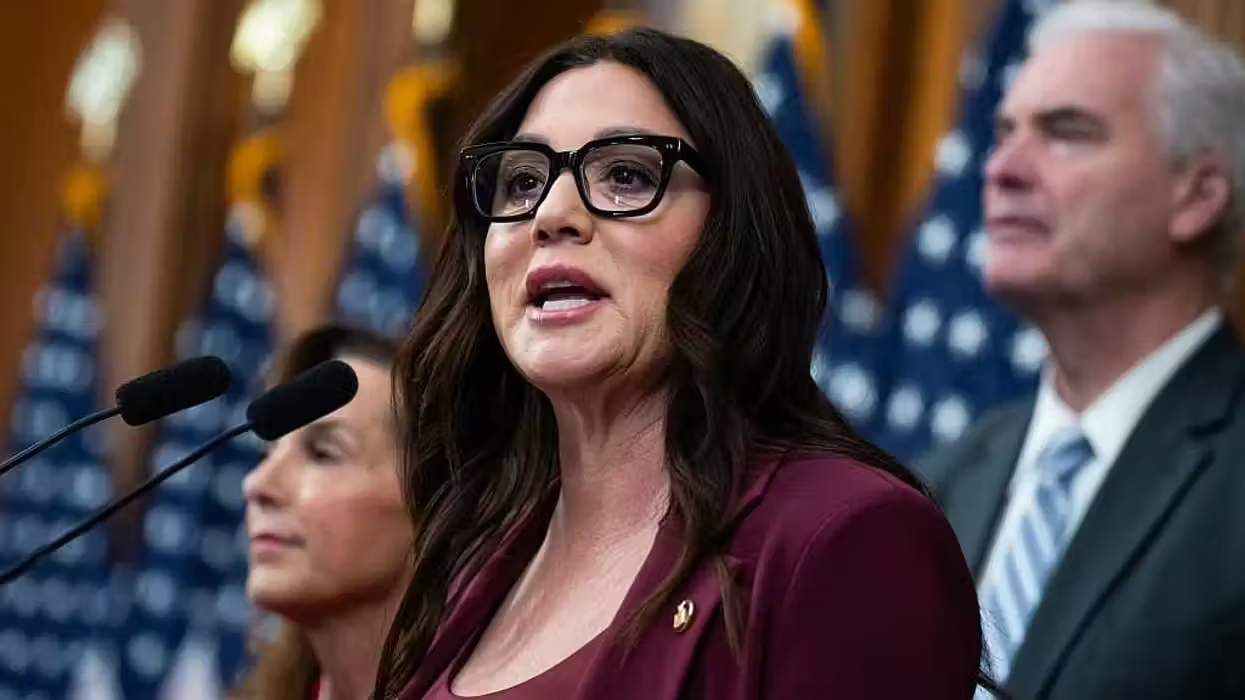
© 2025 Blaze Media LLC. All rights reserved.
Bill Tucker is a veteran journalist with over 25 years experience in television and the internet. An Emmy award winning correspondent and Peabody award winning producer, Tucker has been in the vanguard of internet and technology television and spearheaded the development of the first all-digital television network. Click here to e-mail Bill and here to visit his official web site.
World markets have been in the grip of panicked investors for a week now. It’s little wonder. The devastation in Japan defies imagination. For days, each successive piece of unseen video was more shocking than any that came before it. There are at least 12,000 dead. Villages have been destroyed; washed away to sea. The earth titled on its axis. Nuclear power plants teeter on the verge of meltdown as heroic workers risk their lives and health to bring unstable reactors under control.
We cannot stop watching. Suddenly the instability and riots of the Middle East are no longer on the minds of people. Those images have been replaced by news reports advising of a new nuclear crisis. Emails and blogs fill up with tales of nuclear fallout. Warnings to all Japanese citizens and U.S. Military personnel to get 50 miles away from the reactors at Fukushima spiked the fears. Potassium Iodine pills have become a hot seller in America, as people on the west coast look to stock up to protect themselves from radiation exposure; exposure that experts advise is likely to be an event that will be barely measurable, if at all.
Nuclear power, seen by many as the global green savior to meet our rising energy needs, once again appears tainted. News events have resurrected old concerns of safety issues surrounding nuclear power and they threaten to end the revival of nuclear power perhaps even keep near ready new plants from going on line. The concerns are real. Even Senator Joe Lieberman (I) from Connecticut, a staunch supporter of nuclear power made it clear this week he believes that all current plants and planned plants should undergo a vigorous safety review to insure none of them will ever threaten Americans should they become unstable. President Obama, also a strong supporter, is likely to find his trumpeting of nuclear power muted by events in Japan. For now, the President is standing by his commitment to nuclear and his 2012 budget does request $36-billion dollars in loan guarantees to build small scale reactors. This puts the President and his Department of Energy at odds with many in his own party, including Representative Ed Markey who calls these potential loans, “toxic assets”.
The dilemma is simple: of all alternative or renewable sources of energy, nuclear is the only one that has the ability to reliably supply our power needs while meeting the goal of a clean carbon footprint. And we Americans do rely on nuclear power. Nuclear powered plants meet 20% of our electricity needs every day, according to the Department of Energy. The day when wind and solar might fill those needs is years, even decades, away. For now we are energy dependent on hydroelectric power that generates 6% or our needs, natural gas at 24% and coal at 45%. Petroleum and alternate energy sources account for about 5%.
Currently there are 104 operating nuclear power reactors in America. There is one plant operated by the Tennessee Valley Authority near ready to go on line sometime this year. The Nuclear Regulatory Commission has 18 applications for licenses pending to build 28 new reactors.
The NRC has been very cautious in its reaction to the problems with the reactor failures in Japan. The commission released a statement saying that the NRC would “assess and determine, in an orderly way, if changes are needed” to the current regulatory process which a spokesman points to as being currently rigorous. He notes that in the last 20 years, since Three Mile Island, the nuclear industry has a stellar safety record.
That record has not stopped the naysayers. Those opposed to nuclear power point to Japan and yell, loudly. Of the parade of nuclear power experts on cable news, almost every one of them has been from an organization that opposes nuclear power. Proponents are scarce. Those supporters point to Japan and note, the reactors appear to have survived the 8.9 earthquake and following aftershocks. They are more cautious in their assessment of the situation noting that appears to be the resulting tsunami, which has caused the biggest problems and as of now, we are not sure of the real size of the problem.
We do know we have fear and plenty of it.
We also know we are now seeing a recovery in the oil market. After days of prices falling in the crude oil market, prices rose back above $100 a barrel on St. Patrick’s Day. The initial sell-off was sparked by sentiment that with Japan’s economy suffering a major hit, global demand would ease. Then reality set in.
Supply is still constrained out of the Middle East oil producing states due to riots and uprisings. Libya is in a brutal civil war. Bahrain is uncertain. At the moment, the unrest in Saudi Arabia seems to have been dealt with swiftly and violently.
The global supply is about to be hit with new demand from Japan as the world’s third largest economy begins to recover and rebuild its economy. About 7% of the electricity generated in Japan uses oil as the fuel and 29% uses liquid natural gas (LNG) according to the Federal of Electric Power Companies of Japan. 25% of the electric power generation comes from plants that use coal and nuclear powered plants account for about 29%, or did. With the loss of at least 6 reactors, Japan will have to increase its fossil fuel imports. We are talking about a country that is already the third largest importer in the world of natural gas and oil. It is a country with precious little in the way of natural resources.
If you are a trader or energy speculator, that’s a pretty good argument on where to place your bets. Goldman’s latest energy research sees the price of oil rising to $120 dollars a barrel. With 42 gallons of oil in a barrel, that’s a raw cost of $2.857 a gallon before distillation. In other words, if you are consumer, this is bad news. The national average price of a gallon of gas as reported by the Energy Information Administration (EIA) is now about 78-cents higher than a year ago.
Tom Kloza, the chief oil analyst at Oil Price Information Service (OPIS) was projecting higher oil prices before the earthquake. His prediction was based on a the fact that oil prices typically move higher in the first two quarters of the year as refineries reduce production for maintenance cycles. This is a fact that has not escaped traders and hedge fund operators. A report from early March by the Commodity Futures Trading Commission notes a sharp rise in speculative buying in the oil markets. In other words, before the earthquake ever happened, money was flowing into the oil trading pits seeking to capitalize on a market cycle that typically results in higher prices.
Those looking to the Obama administration for relief won’t find it. The President continues to oppose drilling of known offshore fields. In fact, Obama has a very unfriendly record when it comes to drilling and developing American oil and natural gas wells. Last year his Interior Secretary, Ken Salazar, revoked 138 domestically granted oil leases and announced a ban on offshore drilling.
Those actions are at odds with the President’s rhetoric. At his news conference in February, Obama pointed to an increase in domestic oil production, as a sign that his administration is friendly to oil exploration. Karen Harbert, president of the Institute for 21st Century Energy, an arm of the U.S. Chamber of Commerce, issued a statement in response, “While we welcome the President’s attention to the increasing cost of gasoline, he did not paint an accurate picture of America’s energy reality on oil. “ The increase Ms Harbert points out was the result of decisions made before the President took office. According to the EIA, oil production is forecast to fall over the coming year and production in the Gulf of Mexico is forecast to fall 30% because of the administration’s moratorium on oil exploration and development in the Gulf.
Meanwhile, up in Alaska there are trillions of cubic meters of natural gas sitting in already drilled wells. Because there has been no way of moving the natural gas from the wells to the lower 48, the gas has been pumped back into the wells to increase the efficiency of crude production and then the wells capped and the gas has been left in storage in the wells. The Federal Energy Regulatory Commission reported last month that efforts remain active to build a pipeline what would move the natural gas to Canada and lower United States. For the time being, it’s not likely those efforts will progress much further as the price of natural gas is too low to make building a pipeline economical.
On a different front, a separate pipeline to move oil from Canada to the U.S., known as the Keystone XL is caught in a tug of war within the American government. The State Department supports the project while the Environmental Protection Agency is requesting that further impact studies be done. Opposition from environmental groups who are opposed to oil extracted from oil sands appear to be the reason behind the slow movement there.
So, what’s Japan have to do with energy? Everything it would seem. Its sudden unanticipated need for greater oil and natural gas imports come at a time of rising global demand, uncertain supply chain disruptions from the Middle East and America’s reluctance to accept responsibility for its energy demands.
Want to leave a tip?
We answer to you. Help keep our content free of advertisers and big tech censorship by leaving a tip today.
Want to join the conversation?
Already a subscriber?
more stories
Sign up for the Blaze newsletter
By signing up, you agree to our Privacy Policy and Terms of Use, and agree to receive content that may sometimes include advertisements. You may opt out at any time.
Related Content
© 2025 Blaze Media LLC. All rights reserved.
Get the stories that matter most delivered directly to your inbox.
By signing up, you agree to our Privacy Policy and Terms of Use, and agree to receive content that may sometimes include advertisements. You may opt out at any time.





